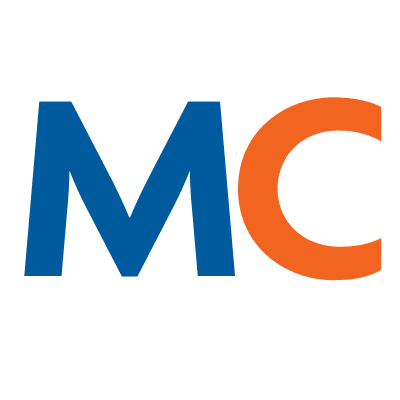- Solutions
- Solutions
- Home Health
- Hospice
- Life Plan Community
- Palliative Care
- Private Duty
- Senior Living
- Skilled Nursing
- Skilled Nursing
- Skilled Nursing Software
- Advanced Insights
- Customer relationship management
- Data and analytics
- Financial & operations management
- Marketing
- Nutrition management
- Referral management
- Regulatory compliance
- Retail management
- Resident engagement
- Revenue cycle management
- Skilled nursing interoperability
- Partners
- Blogs
- Resources
- About
- User Conference

Optimize your software investment
A number of years ago, your organization may have spent a significant amount of time selecting and then implementing software to run your business. You trained the entire staff at great expense. The learning curve was painful for everyone, regardless of how great the software was, and even residents and families felt some effects of the implementation. Fast forward to today. The software has lost its luster. You wonder what else is out there. You’re even starting to feel anxious about all the features you may be missing. Now what? While it’s a great idea to explore your options – because maybe there really is a better way to build a mousetrap – one of your first steps to optimize your software investment should be to reach out to your current vendor.
Research has shown that we retain less than 40% of what we learn after 24 hours and only about 20% after a week. There are different theories about why this is the case, but regardless, when you think about the depth and breadth of an enterprise software solution, chances are you’re not making the most of what you’ve got. It’s likely that there are inefficiencies lurking throughout your business.
The first hurdle, then, is that users who attended the initial software training may have forgotten what they learned during implementation. Eventually, they are replaced by new hires. This creates a second hurdle since new hires likely receive only a portion of the training that the initial users did. This further dilutes knowledge about the software, not to mention the risk of bad information being repeated, like a game of telephone.
All of this leads to where you are today: wondering if your current solution is right for you.
Undertaking a new software implementation upends your business. But many organizations find themselves willing to take the risk after seeing exciting features in demonstrations of flashy new products. What if instead of implementing something new, you put the same effort into ensuring you’re making the best use of what you already have? Here are our top tips to optimize your software investment.
Talk to your vendor
Engage your current vendor and let them know your concerns with their solution. Talk to them about optimization programs they may have. An optimization engagement will involve an in-depth review of your software usage and your business practices and will result in recommendations for how these can be improved. It’s very likely that through this process you will discover many features in the software that you were not aware of or that your organization wasn’t fully leveraging.
If you engage in services to optimize your software investment, these activities will increase your success:
Be willing to make changes. Recommendations may include not only using the software differently, but also changing processes and policies. For example, when some organizations implemented an electronic medication administration record, they continued to follow the same workflow they did when using paper records. Optimization specialists may point out these types of discrepancies and suggest new policies and workflows based on the best practices they’ve seen across the country.
- Rally your organization around the project. Designate a project lead and give him or her the time to work on the optimization suggestions. Set aside time for updating the software and retraining staff just like you would if it were a new implementation. Let your residents and families know that you are undertaking a project to improve the software experience for your organization and that they may notice a few changes and improvements.
- Budget extra time for staff to practice. Give your people ample opportunities to solidify their knowledge.
Here are a few ways to improve retention rates during training sessions:
- Offer training in “chunks.” Don’t train all the changes at once; instead, work on changes in related groups, put them into practice for a period of time, and then work on another “chunk.”
- Plan for just-in-time training. If training is completed too far in advance, there is an additional risk of not retaining the information. Train changes shortly before you are ready to implement them so your team can practice what they’ve learned right away.
- Make sure the environment allows staff to focus on learning. If they are watching the door or the phone, or waiting to get called back to their duties, their ability to retain what they are learning is compromised even more.
- Develop training tools that are specific to the way you do business. There is no one way of doing business, so your software vendor will teach to the most common way and do its best to incorporate the nuances of your industry. However, no one knows it better than you, so the more you can facilitate learning by providing supporting documentation, the better. For example, if you require specific language on your assisted living service plan, let the implementation team know so they can add that language into their training with your team.
Your vendor may also have other resources available that you may be overlooking or underutilizing that could help you optimize your software investment. Tools like online videos and eLearning modules will help you support the solution long-term and will assist in training new hires. Build requirements around revisiting these tools as part of annual competencies to make sure your team stays up to date on the latest information. Even staff who have been using the software for years can often be reminded of a better or more efficient way of doing something when using eLearning tools.
Refer to release notes
Your vendor publishes release notes with every software update. Are you digesting these and distributing the information to your organization? Your staff may not need to read all of the notes, but creating your own version of the release notes that highlights the updates affecting your team ensures that they are taking advantage of new features.
While you’re looking at the release notes, look back through the notes from previous releases as well; you might be surprised to find new features or updates you missed along the way or that didn’t seem relevant at the time but are now.
Are you taking advantage of your vendor’s customer website and portal? This is a great source of information for upcoming and previously recorded educational sessions, software updates, and critical information such as COVID-19 tools and assistance. You may also be able to use this site to submit and track requests related to new features as well as vote on submissions from other users.
Join a user group
Participating in user groups is an excellent way to stay informed and gives you an opportunity to engage directly with executives, product and account managers, trainers, and more. Your vendor’s representatives are anxious to share the exciting things they are doing and want to hear from you. Review meeting agendas in advance so you can be prepared for the discussion and contribute to the conversation whenever possible. Ensure that your organization is represented in each of the key areas, such as clinical, marketing, billing, and IT, so you can get the most out of each meeting and set your organization on the best track to optimize your software investment.
Sometimes, despite taking advantage of everything your current vendor has to offer, it’s just time to make a switch. When that happens, engage with your account manager and give them detailed feedback about why you are making the move. Ultimately, the success of software vendors helps lead to the success of the industry as a whole; your contribution will help other providers be successful in caring for our seniors.
Software is a big expense for your community and can be a key tool in the success of your organization. Giving this tool routine maintenance will keep it, and your organization, running smoothly for many years to come. If you have questions or concerns about your current enterprise software solution, don’t hesitate to talk to your vendor about optimization programs or other resources that may be available to help you make the most of your technology investment. MatrixCare customers should remember that we provide tools like Training Assurance Plus and Optimization Services to improve adoption throughout your organization.
Reference: Schacter, D. L. (2009). Psychology. New York: Worth Publishers. p. 243. ISBN 978-1-4292-3719-2.
Disclaimer
The content in this presentation or materials is for informational purposes only and is provided “as-is.” Information and views expressed herein may change without notice. So, we encourage you to seek, as appropriate, regulatory, and legal advice on any of the matters covered in this presentation or materials.
Request a demo today for a closer look at MatrixCare.
See what MatrixCare can do for you
Robert Moore
Robert Moore, RN, RAC-CT, DNS-CT is a Registered Nurse and the Director, of Strategy & Portfolio Management with MatrixCare LPC (Life Plan Communities). Rob started out in healthcare as a CNA in Post-Acute Care and has been a Registered Nurse for over 15 years. During his time in the nursing profession, he has held the following positions: Telemetry Unit Staff Nurse, Unit Manager, MDS Coordinator, Director of Nursing, Quality Assurance, Business Analysis, and Product Manager. Rob is very passionate about Post-Acute care and the nursing profession as a whole and is always looking for opportunities to serve this profession!
Related Posts



See MatrixCare in action
Start by having a call with one of our experts to see our platform in action.
MatrixCare offers industry-leading software solutions. Thousands of facility-based and home-based care organizations trust us to help them improve efficiency and provide exceptional care.
© 2025 MatrixCare is a registered trademark of MatrixCare. All rights reserved.





